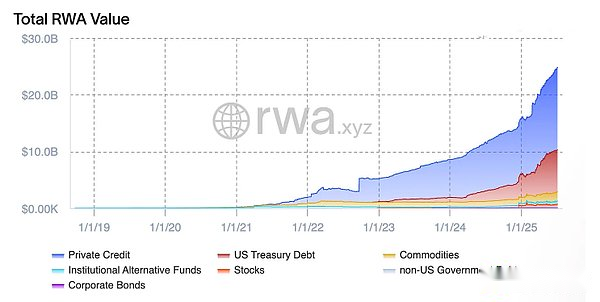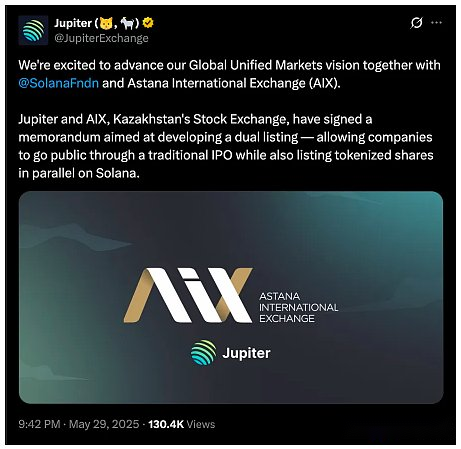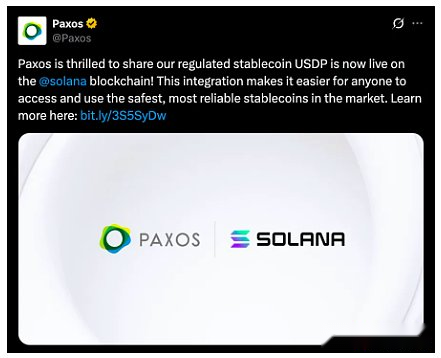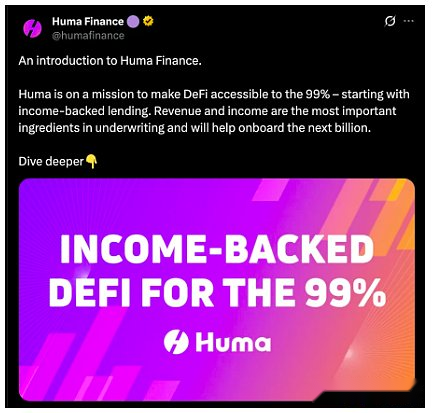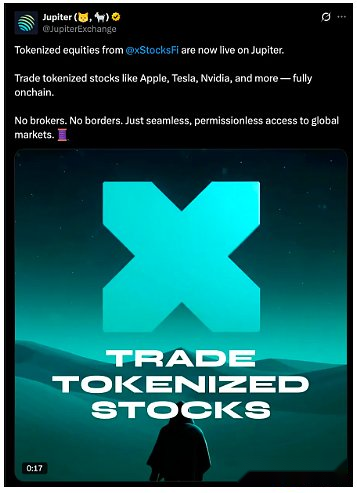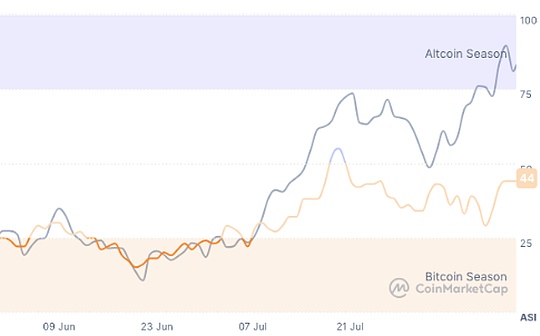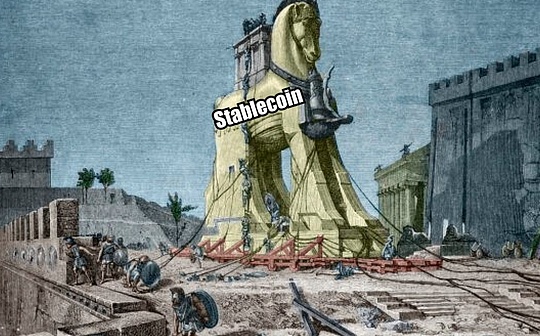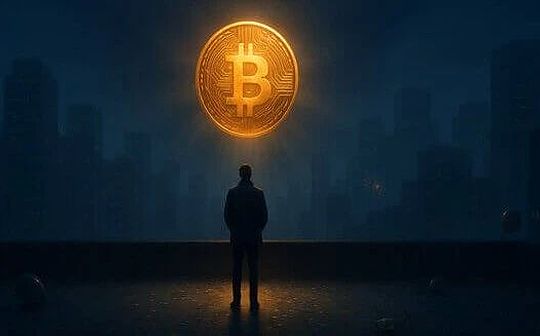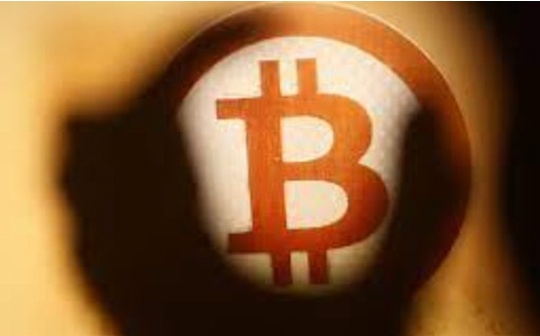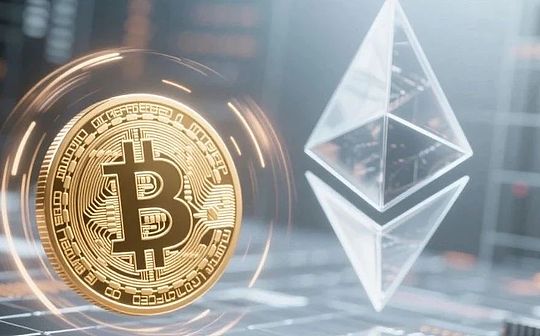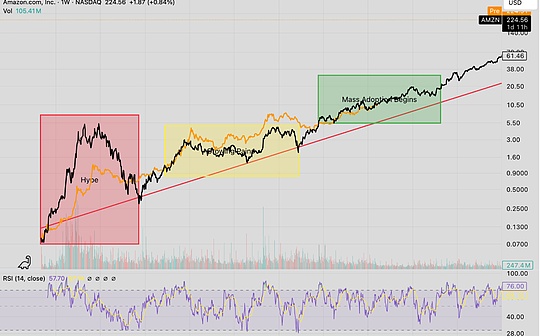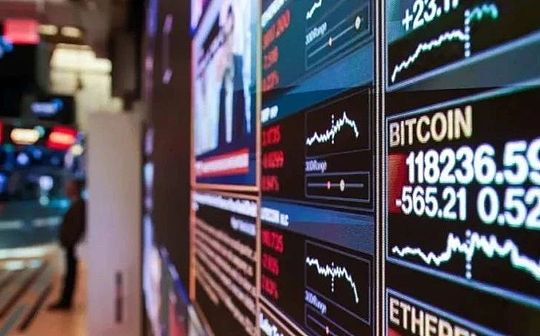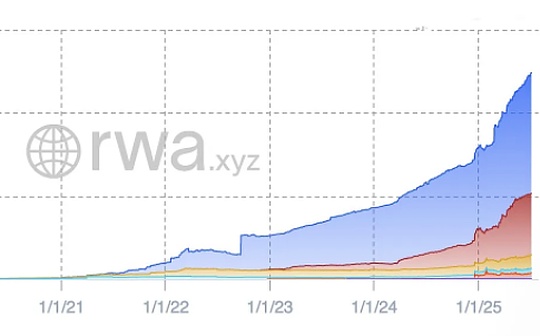
author:Aditya Khetarpal, RWA Researcher; Compiled by: Bitchain Vision
For years, the cryptocurrency narrative portrays traditional finance (TradFi) and decentralized finance (DeFi) as irreconcilable rivals.One is centralized and slow, the other is open and unstoppable.But this narrative is evolving.What we are witnessing is not a conflict between systems, but a convergence: traditional finance is moving on the chain, while decentralized finance is becoming increasingly mature to adapt to this trend.
This shift is most evident in the rise of real-world assets (RWA), and no chain is more inclined toward this future than Solana.This is not a showdown between traditional finance (TradFi) and DeFi, but a combination of traditional finance (TradFi) and DeFi, which is opening a new era of global finance.
What is a Real World Asset (RWA)?
Real-world assets (RWA) are traditional financial assets that are tokenized on the chain and are presented in the form of digital tokens on the blockchain.These assets include both tangible assets such as real estate, as well as intangible assets such as government bonds, stocks and carbon credits.Supported by real-world value, RWA provides a sustainable and reliable digital asset class that bridges the gap between decentralized finance (DeFi) and traditional finance.
OK, but why are they important?
To understand the meaning of RWA tokenization, imagine you want to share a big pizza with friends.Instead of sharing the whole pizza with each friend, you cut it into small pieces, each piece representing a part of the whole.
Asset tokenization is similar.When an asset is tokenized, it is divided into smaller parts, called “tokens”, each part representing a part of the asset.These tokens can represent anything of value, from real estate to intellectual property.These tokens are managed and traded using blockchain technology, ensuring that ownership records are secure and transparent, making assets more accessible, liquid and traded globally.
Why choose Solana?
With its high throughput, low fees and scalable infrastructure, Solana has unique advantages in driving real-world assets (RWA) growth that are critical to supporting large-scale real-world financial activities on chain.With lightning-fast finality and a rapidly expanding RWA native protocol ecosystem, Solana provides the speed and efficiency required to tokenize institutional-level assets.
In this article, we will explore how Solana combines the speed and scalability of blockchain with the stability of traditional finance to become a leading real-world asset (RWA) platform.We will analyze key indicators of Solana RWA development momentum, explore the most important players and institutional partners, and depict the broader RWA ecosystem that is forming on the chain.We will also compare global regulatory approaches, focus on the new opportunities that RWA is unleashing and provide prospects for the future direction of this rapidly developing TradFi and DeFi intersection.
The Rise of RWA: A New Financial Principle
From $5 billion to $24 billion: RWA growth chart (2022-2025)
The scale of RWA tokenization has soared from $5 billion in 2022 to more than $24 billion in June 2025.This increase was as high as 380%, making it the second fastest growing area in the cryptocurrency sector after stablecoins.Although stablecoins are technically tokenized fiat currencies, this analysis does not cover stablecoins.
Source: rwa.xyz
This rapid growth is no longer just hype.We are undergoing a transition from early experiments to large-scale practical applications.By December 2024, the RWA market (excluding stablecoins) had reached US$15.2 billion, and just six months later, the market size has increased by 85% year-on-year to more than US$24 billion.
This momentum stems from the integration of infrastructure construction and institutional investor interests over the years.Major players such as BlackRock, JPMorgan Chase, Franklin Templeton and Apollo have moved from the testing phase to the production deployment phase.Governments have also begun to view blockchain as a critical infrastructure, especially for renovating outdated financial systems and addressing broader economic inefficiencies.
Looking ahead, industry forecasts estimate that between 2030 and 2034, 10% to 30% of global assets may be tokenized.This makes RWA a key bridge between traditional finance’s $400 trillion assets and cryptocurrency, which still has a total market capitalization of less than $3 trillion.
Currently, the integration of RWA and DeFi is accelerating through a regulated composable framework.Platforms such as Ethena, Maple, Morpho, Pendle, Kamino and Security are enabling tokenized assets to gain decentralized liquidity while maintaining compliance.This creates new opportunities for earnings creation, wider asset allocation and active secondary markets.
Private credit has become the largest RWA category, with tokenization reaching $14 billion as of June 2025.This shows that institutions have strong demand for blockchain-based credit markets.Tokenization helps reduce operating costs, improve accessibility, and create liquidity in ways that traditional finance cannot achieve.These products still comply with institutional underwriting standards, but are now more open and efficient.
At the infrastructure level, RWA oracles represent a breakthrough.Vendors like RedStone are developing new pricing systems that combine traditional financial metrics such as net asset value, regulatory data, and adjustments to under-liquidity.Unlike typical DeFi oracles, these systems are tailored for institutional adoption and form the basis for the massive integration of real-world assets into DeFi.
RWA has evolved from a concept to a major business.The growth from $5 billion to $24 billion is just the beginning of a larger shift in the way financial assets flow, trade and create value on the chain.
Why can tokenized treasury bonds lead the trend?
It’s no accident that tokenized U.S. Treasury bonds have become a breakthrough product in all real-world assets.In a high interest rate environment, U.S. Treasury provides a low-risk, high-yield tool that is both familiar to traditional investors and attractive to cryptocurrency native users seeking stability.In crypto terminology, stability means not losing half of your portfolio in a weekend.By putting these government-backed assets on the chain, the DeFi protocol can provide DeFi users with an annualized rate of return (in tokenized dollars) of 4-5%, without having to withstand the volatility of typical crypto assets.
Treasury bonds are particularly suitable for tokenization because of their liquidity, transparency and regulatory clarity.These tools have been digitized and traded actively in traditional markets, so moving towards blockchain is more operationally feasible than more complex assets such as real estate or private equity.From a compliance perspective, tokenized Treasury bonds are also relatively simple, especially when issued by regulated entities and supported by off-chain custodians at a 1:1 ratio.
Platforms such as Ondo Finance, Matrixdock and Backed seized the opportunity to allow individuals and institutions to invest directly in U.S. Treasury bonds through tokenized packaging.These products not only attract stablecoin users and DAOs seeking safer returns, but also lay the foundation for a series of tokenized fixed income products in the DeFi field.
Ultimately, tokenized Treasury bonds will serve as a portal.They are building trust with traditional investors, demonstrating the feasibility of on-chain RWA and opening the door to a broader attempt at more complex financial instruments in the future.
What does this mean for on-chain finance?
The explosive growth of tokenized RWA, especially the U.S. Treasury bonds, marks a turning point in the development of on-chain finance.This marks the shift of financial activity from speculative and volatility-driven to a more mature ecosystem based on utility, benefits and real-world values.DeFi has flourished over the years on native crypto assets, but lacks effective integration with trillions of dollars in traditional financial instruments.RWA completely changed this pattern.
The existence of assets such as treasury bonds has brought new levels of capital efficiency and trust.DAOs and protocols can now allocate reserves to earning low-risk assets without leaving the blockchain.Stablecoin issuers can support their tokens with tokenized government bonds, creating a more transparent and auditable system.Even lending markets can develop, offering mortgages backed by tokenized treasury bonds rather than volatile cryptocurrencies.
This transformation also opens the door for new participants.Institutional investors, family offices and fintech companies that have been cautious about cryptocurrencies are now finding solace in familiar financial products delivered through blockchain tracks.This is no longer just income farming or meme tokens; now it is about building a faster, cheaper, and more inclusive parallel financial system.
In short, RWA marks the thriving DeFi.In the future, on-chain finance will not replace traditional finance, but will absorb and enhance traditional finance and provide a programmable, global and transparent level that is incomparable to traditional systems.
Why choose Solana?Technical and economic reasons
Solana currently leads all blockchains in terms of per capita transaction volume.While this indicator may seem niche at first glance, it reveals some important information.Solana is not only fast, but is being used on a large scale, actively and efficient manner.High per capita transaction volume means that users are not only active, but also transfer huge value to the network.This reflects the real participation of users in areas such as transactions, payments, DeFi, NFT, and growing real-world assets.
This is a strong signal for the RWA field.Institutions and asset issuers prioritize cost-effectiveness, speed and user activity when choosing a blockchain that supports tokenized financial products.Solana is able to process thousands of transactions per second at extremely low fees, making it ideal for assets that require frequent settlement, interest allocation, redemption or rebalancing.These characteristics are particularly important for tokenized Treasury bonds, bonds and stocks.
In short, the average transaction volume of $40 million highlights Solana is ready for important financial applications.This not only demonstrates the capacity of the network, but also proves that it has practical significance in the real world.To scale up RWA, they need more than tokenization.They need infrastructure that can support high-capacity, high-value financial activities.Solana is already doing this.
Speed, cost-effectiveness and parallel transaction processing
One of the main reasons why Solana stands out in real-world asset applications is its unique technical architecture.Unlike most blockchains that process transactions in sequence, Solana uses a system called “Proof of History” that allows transactions to be processed in parallel.This means that thousands of transactions can be verified and finalized at the same time, enabling unparalleled speed and scalability.
Coupled with the transaction fee that usually costs only a fraction of a cent, Solana becomes the ideal choice for financial products that require high-frequency settlement or continuous updates.Whether it is paying interest on tokenized Treasury bonds, issuing dividends on tokenized stocks, or updating ownership records in real time, Solana’s low-latency environment can easily support these use cases.
For RWA, it’s more than just a technical detail.It directly affects availability and cost-effectiveness.Institutions need infrastructure that can operate at scale without introducing friction.Users want real-time interactions with assets, rather than delays or high gas fees.Solana does both, providing a blockchain experience closer to traditional finance expectations, while also having the added benefits of transparency, programmability and composability.
Combined with powerful indicators such as transaction volumes per holder, Solana’s technological advantages further consolidate its position as a natural home for tokenized real-world assets.
Today, in addition to speed and cost-effectiveness, Solana’s thriving developer ecosystem plays a major role in driving real-world assets adoption.The network attracts thousands of developers who are creating tools, protocols and infrastructure to release, integrate and scale tokenized financial products more easily.From smart contract frameworks like Anchor, to real-time indexing tools like Helius, to RPC providers like Triton, the developer stack on Solana is maturing rapidly.
This evolving ecosystem drives the development of composability, one of the iconic features of on-chain finance.In the Solana context, composability means that different protocols can easily interact with each other.For RWA, this creates an environment where tokenized assets can be directly accessed to DeFi primitives such as lending markets, liquidity pools, earnings aggregators, etc. without complex workarounds or bridges.
For example, tokenized U.S. Treasuries issued by agreements such as Ondo can be deposited into lending agreements, used as collateral, or traded on decentralized exchanges in real time.These interactions are achieved because Solana has a unified runtime and high transaction throughput, keeping the system smooth and efficient even under high demand.
In traditional finance, integrating services from multiple institutions requires slow settlement layers and manual coordination.On Solana, composability makes building a financial product as easy and quick as making a cup of tea.Fast, seamless and programmable.This is a major advantage for the RWA industry, which requires flexible infrastructure to support innovation in issuance, settlement, custody and transactions.
By developers building open and interoperable tools and protocols on high-performance chains, Solana provides the ecosystem that RWA needs to reach global scale.
Without demand, all these technological and ecosystem-level advantages would be meaningless, and this demand is now coming from some giants in the traditional finance field.In the past year, major institutions have not only noticed real-world assets, but have also begun to directly invest funds in tokenized products on the blockchain network.Solana, in particular, is becoming a key destination for such institutional activities.
Organizational verification: big name, big move
BlackRock’s BUIDL USD Institutional Digital Liquidity Fund has become an outstanding example.Launched through Securitize in March 2024, BUIDL has since expanded to Solana and six other blockchains, growing from $500 million in July 2024 to $1.7 billion in March 2025, an increase of up to 240%.Today, the fund holds nearly $3 billion in assets, showing huge capital inflows and rapid expansion.The launch of BUIDL marks the reality of institutional DeFi, which provides peer-to-peer stock transfers, daily dividend accumulation, and institutional-level custody services through Anchorage, Copper, Fireblocks and Bank of New York Mellon.
OnChain U.S. Government Money Fund (FOBXX) in Franklin Templeton has been online since April 2021 and introduced Solana in February 2025.Currently, the fund’s asset management scale is approximately US$594 million, ranking third largest tokenized money market fund.The fund is almost 100% invested in U.S. government bonds and buyback agreements, with a seven-day yield of 4.2% as of January 2025.One of the world’s largest asset managers, which manages $1.6 trillion in total assets, expands it to Solana this time, showing that Solana is more confident about the performance of the Solana network.
The mechanism adoption will unlock:
1. Verification of market scope:
When institutions such as BlackRock and Franklin Templeton issue tokenized funds, they provide clear legitimacy that allows regulators, corporates and institutional investors to believe that blockchain-based financial products can meet high standards of compliance and supervision.
2. Infrastructure maturity:
The agency’s need for custody, auditability and regulatory compliance forces the agreement to escalate.Securitize’s platform acts as a transfer agent, custodian and fund manager across multiple blockchains, currently supports over $2.8 billion in tokenized Treasury bonds and manages most of the top tokenized assets.
3. Enhance liquidity and integration:
Institutional tokenized assets can become collateral for DeFi, mortgage-guaranteed lending pools, and even secondary trading markets.Smart contracts support daily income distribution and programmable fund logic, which is a big step over the traditional T+1 settlement cycle.
4. Promote composability and ecosystem development:
Institutional-level RWA brings new traffic to Solana; these assets can be combined for lending, trading and automating.As BUIDL and FOBXX flow into DeFi applications, they will open up a wider income network and financial engineering ecosystem.
All in all, BlackRock and Franklin Templeton have lifted Solana’s RWA vision from promising potential to practical reality.Their on-chain layout not only verifies this field, but also accelerates the injection of institutional capital, upgrades infrastructure, enhances liquidity, and enhances composability.This marks an important moment in the development of on-chain finance.
Key players and protocols that drive RWA on Solana
As Solana becomes the go-to destination for real-world assets, more and more projects are leading the way.These protocols not only build independent products, but also form the basis of a fully interoperable financial system on the chain.Each protocol focuses on unique parts of the RWA stack, from token issuance and lending to infrastructure and institutional connectivity.
Ondo Finance:
Ondo Finance has become one of the most influential RWA platforms on Solana.It provides tokenized U.S. Treasury bonds through products such as OUSG, allowing institutions and individuals to invest in short-term government bonds on-chain.Ondo also expands its business globally through collaboration with centralized exchanges, fintech platforms and cross-border issuing agencies.Its expansion in Solana reflects its commitment to low-cost, high-speed infrastructure, making its products more accessible and scalable.
Maple Finance:
Maple Finance was originally built on Ethereum and has now expanded to Solana to support a new low-solid-chain lending model.By working with institutional borrowers and whitelisted credit professionals, Maple enables funds to flow into real-world lending markets such as corporate credit and private credit.After migration to Solana, Maple can improve capital efficiency with faster settlement speeds and lower transaction costs while maintaining regulatory consistency and transparency.
VNX:
VNX is building a tokenized infrastructure in Europe, focusing on regulated digital securities backed by assets such as precious metals and fixed income products.The platform is in line with Luxembourg’s financial licensing framework and aims to provide European investors with seamless access to tokenized assets.The integration of VNX with Solana brings these products into a high-performance environment that supports cross-border issuance and secondary market transactions.
Corda and Solana integration for R3:
R3’s Corda is an enterprise-class blockchain used by major financial institutions such as HSBC, EBL and Swiss Digital Exchange, and is currently integrating with Solana to connect institutional finance with DeFi.The integration allows assets issued on Corda to be transferred to Solana’s public chain, thus unlocking the liquidity and programmability of traditional financial instruments.The cooperation combines the regulatory rigor of enterprise blockchain with Solana’s speed and composability.
Together, these agreements demonstrate the diversity and strength of the Solana RWA ecosystem.They not only introduce assets, but also build the infrastructure needed to trade, borrow and use assets in complex financial strategies.This growing network of builders reflects that Solana is becoming an important home for tokenized finance.
Tokenized stock login chain
In 2025, the launch of xStocks marks an important step forward for Solana on RWA.Backed Finance, Kraken, Bybit and Solana Foundation have launched 55 tokenized stocks and ETFs, such as Apple and Tesla, and are issued in the form of SPL tokens.These tokens are fully collateralized, can be legally redeemed 1:1, and can be traded on centralized exchanges and Solana’s native DeFi platforms.
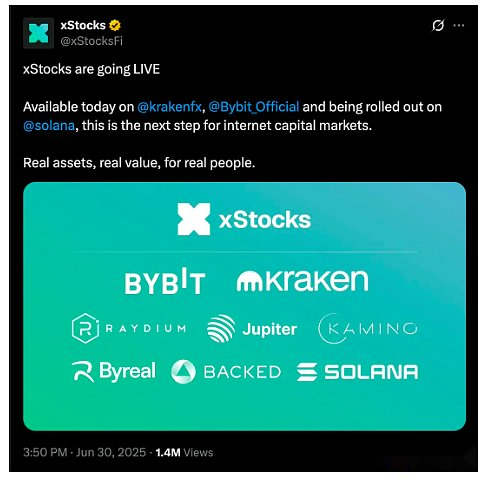
Users can now self-host stocks in wallets like Phantom or Solflare.Split ownership starting at $1 makes global access more convenient, especially for users in restricted areas.However, most tokens other than blue chip stocks are still weak in liquidity.Weekend price discovery is also restricted.Despite these challenges, the support from institutional investors and growing demand for the future are a sign of rapid development.
Ecosystem highlights: collaboration and integration
Strong infrastructure partnerships connect traditional finance with blockchain tracks, accelerating Solana’s RWA growth.
Jupiter and Kazakhstan Stock Exchange:
Jupiter’s partnership with the Kazakhstan Stock Exchange (KASE) explores dual listings.The goal is to allow businesses to IPO in KASE and issue tokenized shares in Solana.This will make Kazakhstan a pioneer in the mixed capital market and mark a growing global trust in public blockchain finance.
Stablecoins: Circle and Paxos:
USDC and USDP play a vital role in RWA settlement.Their integration with Solana enables instant, low-cost settlement and cross-border transfers for tokenization tools such as U.S. Treasury and bonds.These stablecoins improve liquidity and availability of financial operations.
Wallets, custodians and compliance infrastructure:
Secure hosting and compliance are crucial for organizations.Fireblocks, Anchorage, and Copper provide institutional-level hosting services.Fractal and Civic are responsible for identity verification.Wallets such as Backpack and Phantom are being adjusted to support financial tokens, thereby enhancing the user experience for retail and institutional investors.
The rise of human finance and income-backed loans:
Huma Finance introduces revenue-based lending on Solana through its PayFi protocol.It allows users to use income streams such as payroll or invoices as collateral.Huma’s PST token allows these revenue streams to be accessed using Jupiter, Kamino, and RateX’s DeFi policies.This introduces a new credit layer to the RWA ecosystem, integrating the composability of DeFi with real-world financial data.
xStocks on Jupiter:
Jupiter has integrated xStocks, allowing users to trade U.S. stocks on-chain at low fees and autonomous custody.The collaboration between Kraken, Backed Finance and Solana is in line with Jupiter’s mission to achieve a global vision of accessing traditional markets without permission.
RWA Ecological Panorama on Solana
As RWA grows on Solana, protocols are organized into functional categories.
Tokenized Treasury Bonds
-
Ondo Finance: Provides OUSG, a tokenized short-term Treasury bond.
-
Superstate: Institutional-level income assets.
-
Franklin Templeton: The FOBXX fund is now available on Solana.
-
BlackRock BUIDL Fund: Issued through Securitize and bridged to Solana.
Lending and Underwriting
-
Maple Finance: Provides low mortgage loans to institutions.
-
Huma Finance: On-chain income-backed loans.
-
Creditix: Financing through off-chain revenue (potential Solana integration).
Infrastructure and compliance
-
Hosted by: Fireblocks, Copper, Anchorage.
-
KYC/AML: Fractal, Civic
-
Securitize: Legal transfer and compliance of tokenized funds.
Institutional integration
-
Corda of R3: Linking financial giants to Solana.
-
Kazakhstan Stock Exchange: Exploring dual listings tokenization.
-
BlackRock and Franklin Templeton: Actively distribute tokenized funds.
Exchanges and secondary markets
-
Jupiter: RWA liquidity aggregation.
-
Phoenix, Orca, Meteora: Supports RWA token listing.
-
Wormhole and DLN: Cross-chain asset settlement.
Solana’s RWA stack is not isolated.It is an interconnected financial infrastructure covering issuance, custody, transactions and compliance.
Global Regulatory Outlook: Coordinating Traditional Finance (TradFi) with Decentralized Finance (DeFi)
Regulators are slowly catching up with the RWA trend.
USA:
The United States is still broken.The Securities and Exchange Commission (SEC) and the Commodity Futures Trading Commission (CFTC) often clash, but recent legislative efforts aim to clarify the status of stablecoins.BlackRock and Franklin Templeton’s activities show that despite the slow rule-making, a regulated future path does exist.
EU:
The MiCA regulations to be issued by the EU in 2025 will bring a clear definition of stablecoins and tokenized assets.With the advancement of pilot projects for digital bonds and tokenization funds, the EU is creating a structured and open environment for blockchain finance.
Asia:
Singapore supports tokenized finance through projects such as Project Guardian supported by the Monetary Authority of Singapore (MAS).Hong Kong has issued licenses to cryptocurrency service providers.Kazakhstan is becoming an emerging frontier market through Solana native IPO trials.
Regulators across regions are accepting tokenized Treasuries and distinguishing between consumer-level DeFi and institutional-level tools.Jurisdictions that provide clear regulation and sandbox support will attract more RWA builders.Solana’s compliance tools put it at the forefront.
Opportunities and Futures for Solana on RWA
RWA is just getting started.Solana’s architecture is empowering new asset classes and more convenient financial services.
Beyond Treasury bonds: Real estate, private credit and stocks:
Next comes to tokenized real estate and private credit.Real estate can be split to improve liquidity, while private credit can be served through transparent, programmable smart contracts.xStocks and Kazakhstan’s dual listing pilot show how tokenized stocks will grow globally.
Combinable RWA DeFi:
Solana’s composability makes RWA available across protocols.Tokenized Treasury bills or real estate tokens can be collateralized, traded or pledged.This converts assets into programmable financial primitives.
Retail-friendly products and revenue enhancements
In the future, some applications will emerge to help users allocate their savings into the tokenized asset basket.Solana’s low fee and quick confirmation capabilities make retail-grade, user-friendly tools possible.You can now buy U.S. stocks through a crypto-native interface, earn earnings, or lending on tokenized ETFs.
Emerging Markets: Latin America, Africa and beyond:
In areas where inflation hit hard or banking services are scarce, tokenized dollars or stocks are lifeline.Solana’s speed and price advantages make it ideal for large-scale deployment of RWA in these markets.Mobile access, local stablecoins and community engagement are key drivers.
Personal opinion
RWA is in strong momentum, but also faces the following challenges:
Liquidity fragmentation:
The standards for issuing assets vary from platform to platform, which makes interoperability difficult.Jupiter helps in the aggregation layer, but requires deeper cross-protocol integration.The problem of slippage and mismatch in pricing also persists, especially on weekends.
Legal enforceability:
Asset tokenization does not guarantee its enforceable rights.Legal agreements and clarity are crucial for global adoption.Differences in cross-border jurisdictions complicate asset effectiveness and investor protection.
Hosting and compliance risks:
Smart contract risks, poor wallet management and lack of insurance are all obstacles.Organizations need a solid custody and compliance framework.Even the obstacles to KYC and AML will slow down the entry speed.
Building traditional investor trust:
Organizational expectations are clear, controllable and reliable.The blockchain user experience must continue to evolve to match traditional platforms.Education, transparency and trust will be as important as performance or innovation.
Conclusion: Solana’s RWA Advantages
Solana is no longer just a quick chain.It is a financial platform that actively hosts large-scale RWA.With the support of companies such as BlackRock, Franklin Templeton, Kraken, etc., it has developed into the legal foundation of global finance.
RWA brings familiarity and regulation to DeFi.Their appearance suggests that DeFi is shifting from speculative to efficient capital markets.Solana’s speed, composability and infrastructure give it its unique capabilities to lead this new wave.
Robinhood’s launch of tokenized stocks on Arbitrum, along with Solana’s growing institutional support, all suggest that this is just the beginning.Tokenized stocks, private equity and 24/7 trading will become the norm.The wealth effect will spread to DeFi, stablecoins, and even meme fields.
Now is the time for builders to create practical tools, the time for institutions to modernize their products, and the time for regulators to help build effective frameworks.
TradFi and DeFi are in merging.And Solana is where this future is built.

